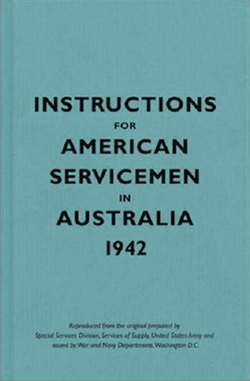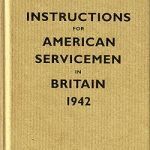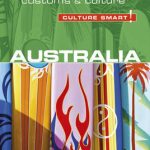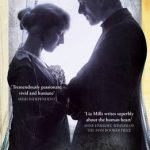Disclosure : This site contains affiliate links to products. We may receive a commission for purchases made through these links.
Instructions for American Servicemen in Australia (1942)

This little book is marvellous reproduction of the original wartime guide, straight from the depths of the world-renowned Bodleian library.Nearly 1 million American soldiers passed through Australia between 1942 and 1945 as part of America`s strategy to recapture the Philippines and defeat Japan. They encountered a country full of reassuring similarities and strange differences. Here was a land of wide-open spaces, roughly the same size as the US, with a can-do, pioneering spirit, a history of swift development; a land of `funny animals` and peculiar vowel sounds. But who were the Australians and how were Americans to behave in their midst? They were, of course, `an outdoors sort of people, breezy and very democratic`, with a gargantuan appetite for swearing. In the inimitable prose of the soldier`s pocket book series, this pithy guide captures the essence of Australia and its people, their humour, vocabulary; their attitude to the Yanks, the British, the War and the world with remarkable economy and clarity. It also manages to squeeze in a small canvas of Australian history, politics, economics, sports, and musical tradition, as well as colourful lexicon of national slang, which defines for example sheila as `a babe`, cliner as `another babe`, and sninny as `a third babe`. Like any self-respecting guide to Australian culture, it contains the text of Waltzing Matilda, together with a few bon mots about its cultural significance, particularly in wartime. Unlike cricket, which is a polite game, Australian Rules Football creates a desire on the part of the crowd to tear someone apart, usually the referee. The Australian has few equals in the world at swearing…the commonest swear words are bastard (pronounced “barstud”), “bugger,” and “bloody,” and the Australians have a genius for using the latter nearly every other word.These qualities of colloquialism and directness evoke the gritty reality of war and cultural upheavals which accompanied it; they also characterise the book’s appeal to its original readers and the newfound audience today.

































































